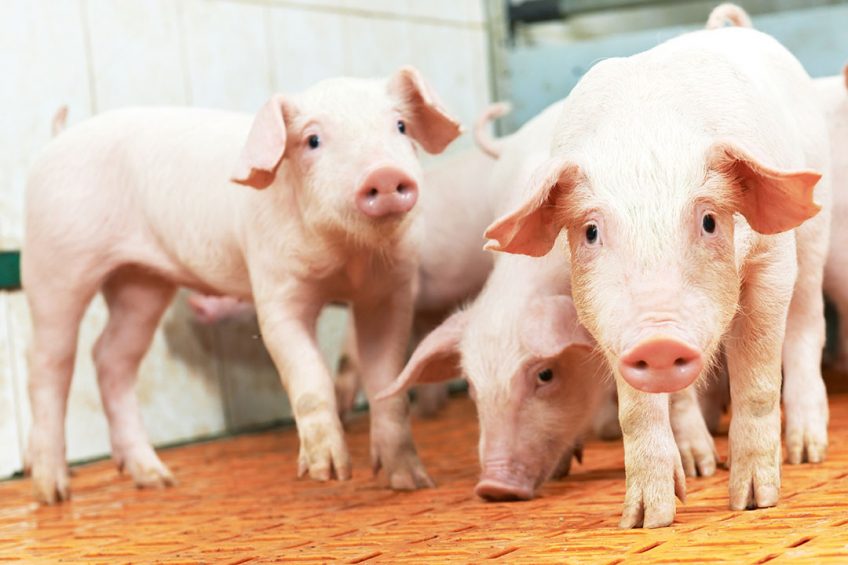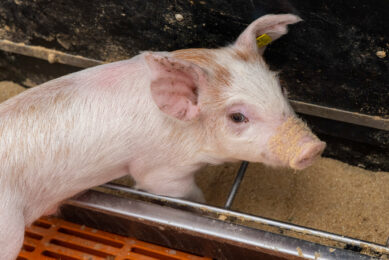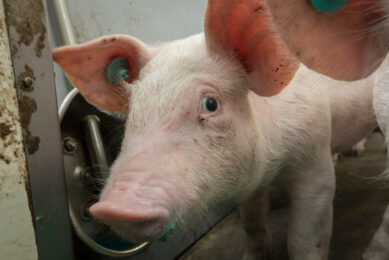5 thoughts when choosing copper for piglets

The inclusion of a highly bioavailable source of dietary copper helps to overcome the growth depression in post-weaned piglets and severe economic losses to the producers. Copper methyl hydroxy analogue chelate meets the characteristics needed to be of choice as a source of copper in piglets.
Copper has known antibacterial effect beside others, like stimulation of enzymatic activity and systemic effects that indirectly stimulates feed intake and growth. Organic sources of trace minerals result from the complexation of a metal by an organic molecule. A chelate is a specifically defined complex for which the metal is attached to the ligand at two points at least. Chelation improves the bioavailability of the metal by protecting it from antagonisms in the digestive tract and by optimising its absorption and metabolic use
Higher bioavailability
Bioavailability is a key factor in mineral absorption. Not all copper sources are the same and organic trace minerals can differ in their bioavailability. Cu-MHAC (Mintrex Cu trace mineral, Novus International, Inc.) is a bis-chelate trace mineral with high bioavailability. The chelated molecule consists of one copper atom bound by coordinate covalent bonds to two molecules of HMTBa [2-hydroxy 4-(methylthio) butanoic acid or methionine hydroxy analogue]. This stable and less reactive structure protects copper against numerous antagonisms and interactions with other components in the digestive tract, allowing it to reach the absorption site with increased bioavailability compared to other copper sources. Additional nutritive value can be found in the HMTBa ligand, which is used independently as a source of methionine in animal rations. In a trial, copper liver deposition in piglets fed different sources of copper was analysed.
616 piglets were allocated in 4 treatments (7 pens with 22 piglets per pen): a negative control (6 mg/kg copper from CuSO4) and 3 treatments supplemented with different Cu sources [CuSO4, tribasic copper chloride (TBCC) or Cu-MHAC] at 150 mg/kg (Figure 1). Piglets receiving the copper chelate had significantly higher liver copper levels, reaching 73.3 mg/kg compared to piglets supplied with CuSO4 and TBCC.
As the dietary copper levels in the feed were identical in these three groups, it can be concluded that the Cu-MHAC was better absorbed and stored than the two inorganic sources.
Overcome negative interactions
The chemical structure of Cu-MHAC has shown to reduce negative interaction with enzymes and other nutrients. Moreover, the reduced formation of copper-phytate complex improves phytase efficacy as controlled research reported improved digestibility of copper, crude protein, phosphorus, fat and energy. Research trials have shown that supplementation of Cu-MHAC in phytase-supplemented diets improves growth performance above levels obtained by copper sulphate.
Minimise post-weaning growth depression
Copper supplementation is essential to support animal development, especially after weaning when many stressful factors cause growth depression in piglet.
During this period, inclusion of a highly bioavailable source of dietary copper can exert a positive effect to overcome this depression. Research trials demonstrate that the use of Cu-MHAC promotes piglet growth by improving body weight gain and feed efficiency. A trial involved 80 weaned piglets and 2 treatments (with 10 replicates and 4 piglets per pen): a control diet containing 125 ppm copper as CuSO4 and 80 ppm copper as Cu-MHAC.
Cu-MHAC outperformed CuSO4 resulting in higher body weight gain and improved feed to gain ratio (Figure 2).
Such results fit well in a published multi-trial analysis comparing CuSO4 against Cu-MHAC in piglet diets. Based on the data it was concluded that Cu-MHAC is more effective than CuSO4 in improving growth performance parameters. Moreover, studies demonstrate that Cu-MHAC may increase lipase activity, serum concentration of growth hormone, and greater release of ghrelin, the hunger hormone. Thus, there is strong evidence for the improvement of performance in systemic mechanisms beyond the well-documented antibacterial effect of copper in the gut.
Maximise overall and gut health
During post-weaning, the piglet gut is exposed to several challenges causing poor nutrient absorption. Post-weaning diarrhoea has become a very important topic in the EU with stricter rules regarding the use of copper in weaner feeds. Permitted copper levels in complete feed are down to 150 mg/kg (up to 4 weeks post-weaning) and to 100 mg/kg (at 5 to 8 weeks post-weaning).
Providing a highly bioavailable source of copper to piglets can minimise enteric symptoms, requiring lower levels of copper. Research trials show that Cu-MHAC optimises gut and overall health by reducing diarrhoea rates, reducing copper excretion in the faeces and providing more plasma copper to improve immune response in piglets.
In an experiment, 108 weaned piglets were allotted to 3 treatments (with 6 replicates and 6 pigs per pen): a negative control diet, CuSO4 supplemented at 250 ppm of copper and Cu-MHAC at 50 ppm of copper. Cu-MHAC supplementation reduced diarrhoea rate compared to the negative control group and it resulted as much effective to reduce diarrhoea at 50 ppm of copper than 250 ppm of copper as CuSO4 (Figure 3).
Less mineral excretion to the environment
Reducing the mineral excretion from farm animals is increasingly important due to environmental concerns. Inorganic trace minerals like oxides, chlorides and sulphates have been widely used in nursery piglets.
However, the bioavailability is poor compared to Cu-MHAC. High inorganic supplementation does not maximise copper uptake and can result in continued metabolic deficiencies and unlike Cu-MHAC, studies show that much of the inorganic copper fed is excreted in the manure, thus contributing to the accumulation in soil, ground and surface waters.
Author: Roberto Barea, Technical Service Manager – Europe, Novus International, Inc.
References are available on request






